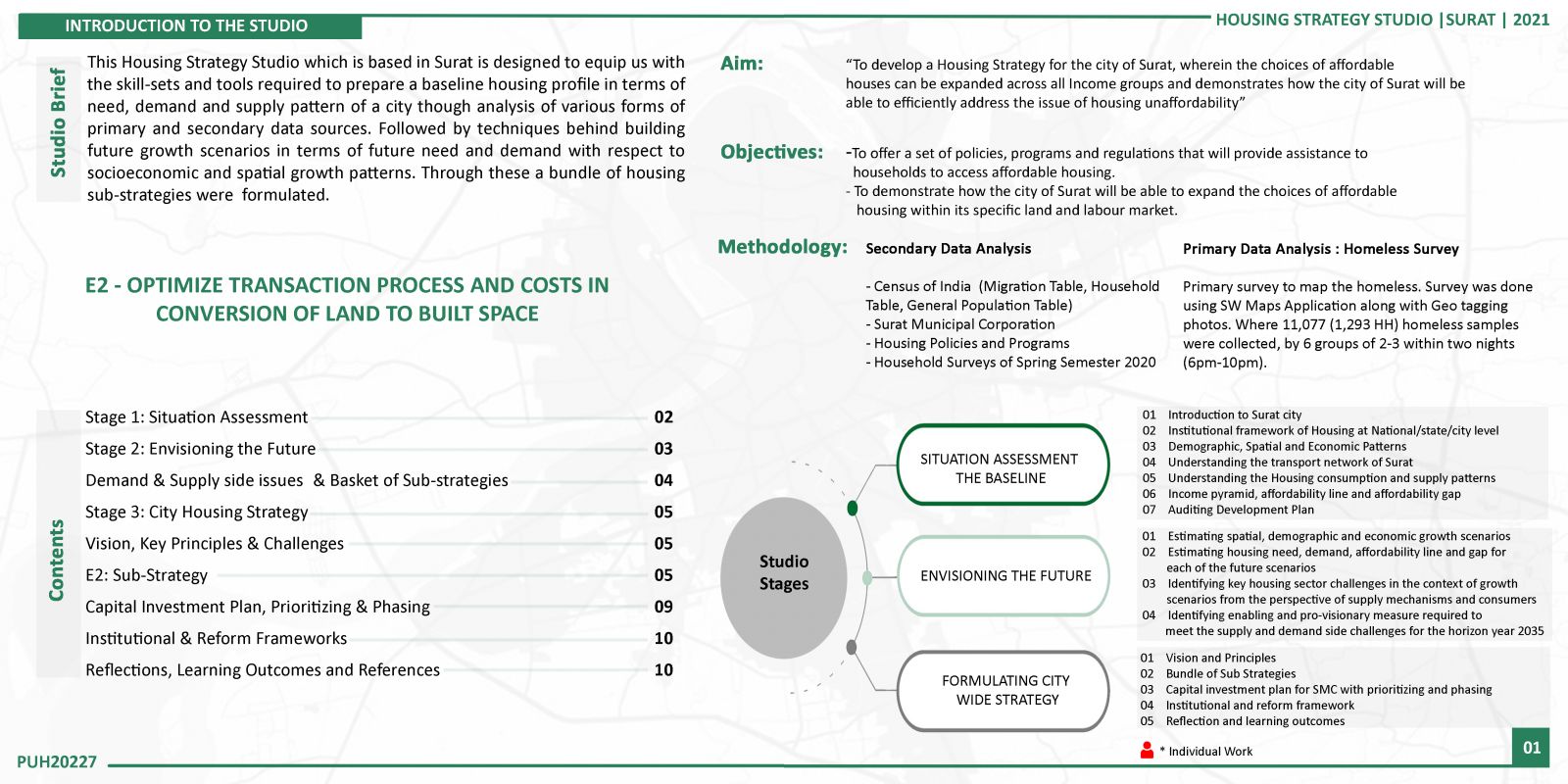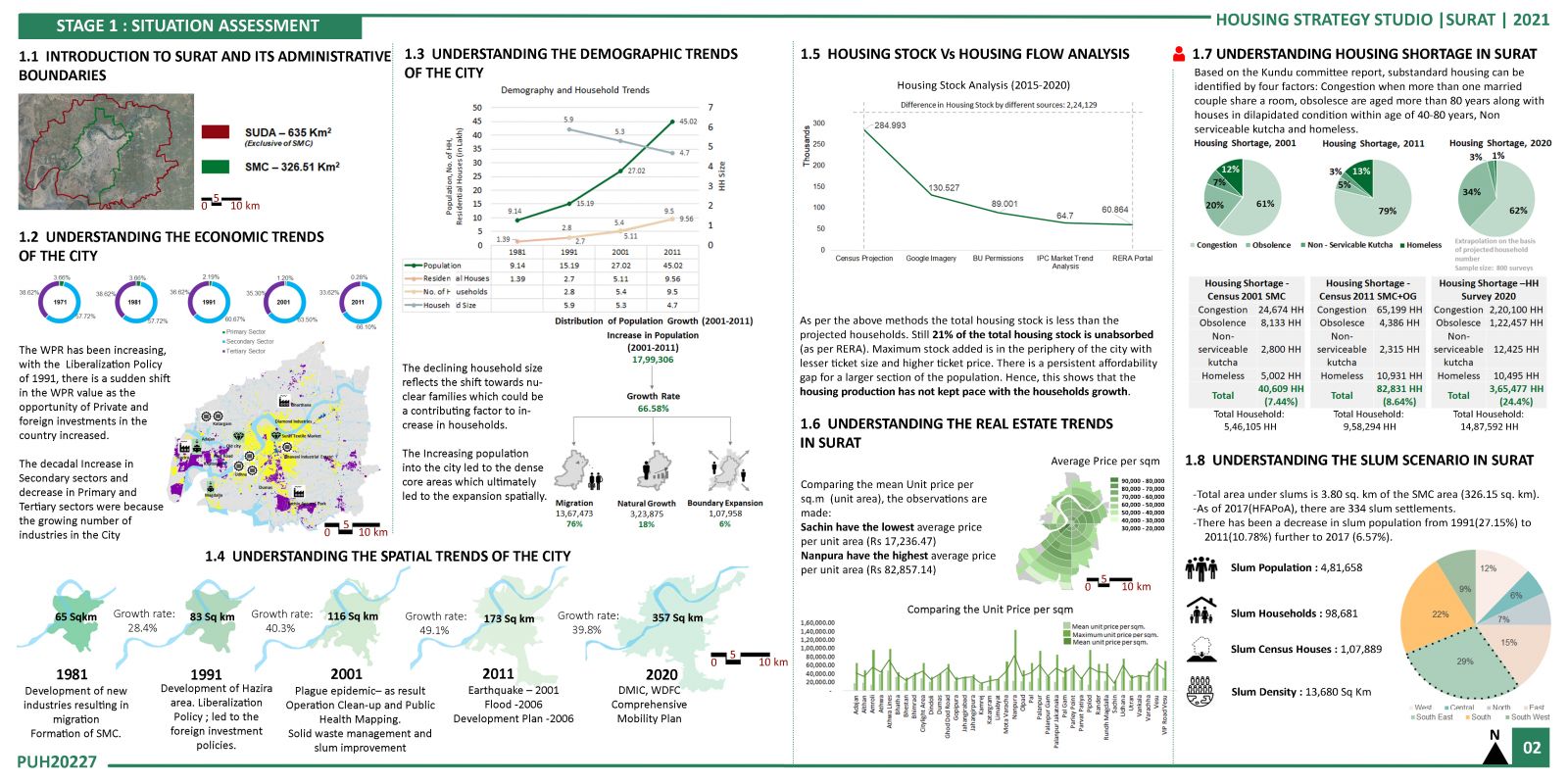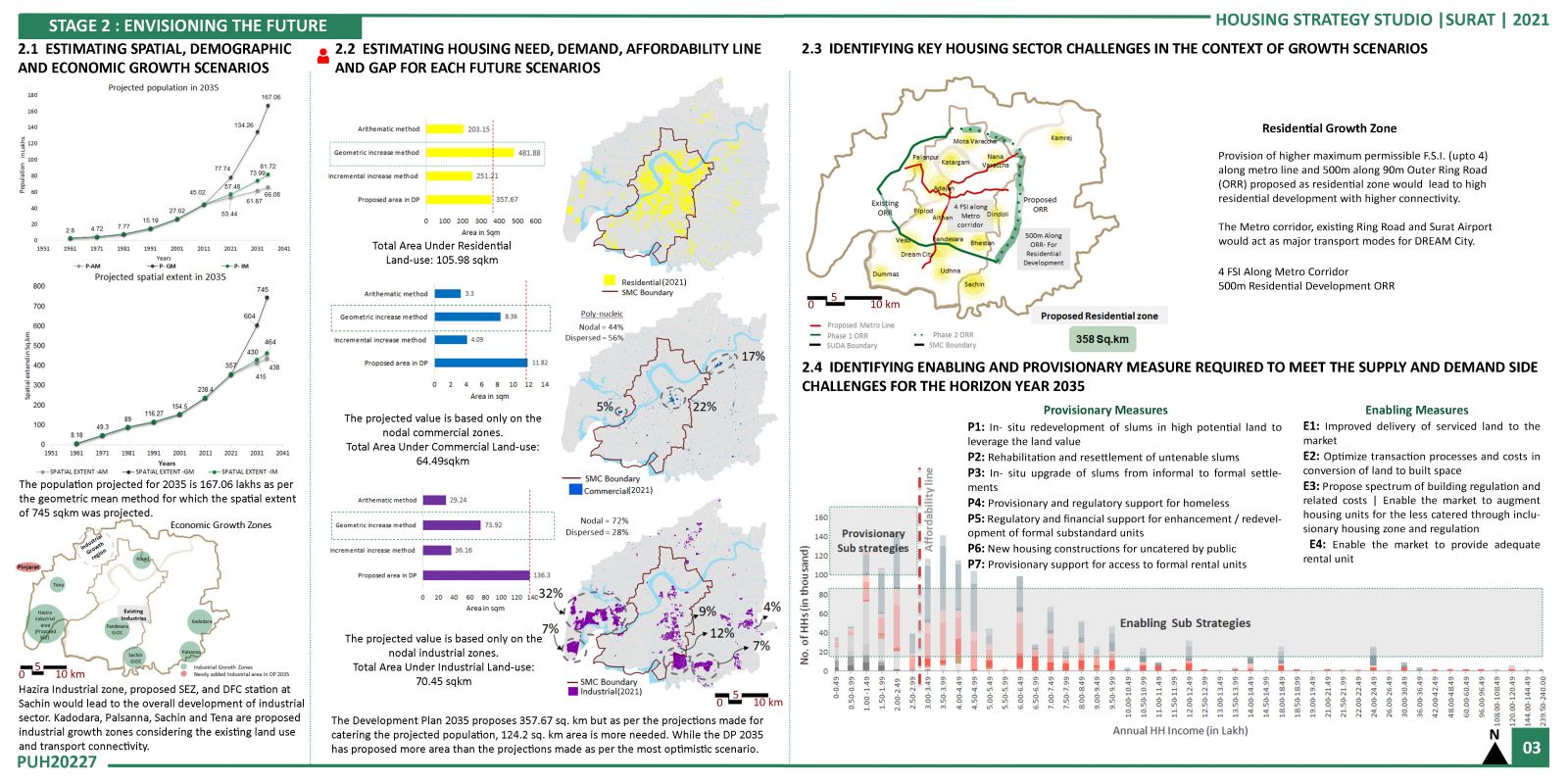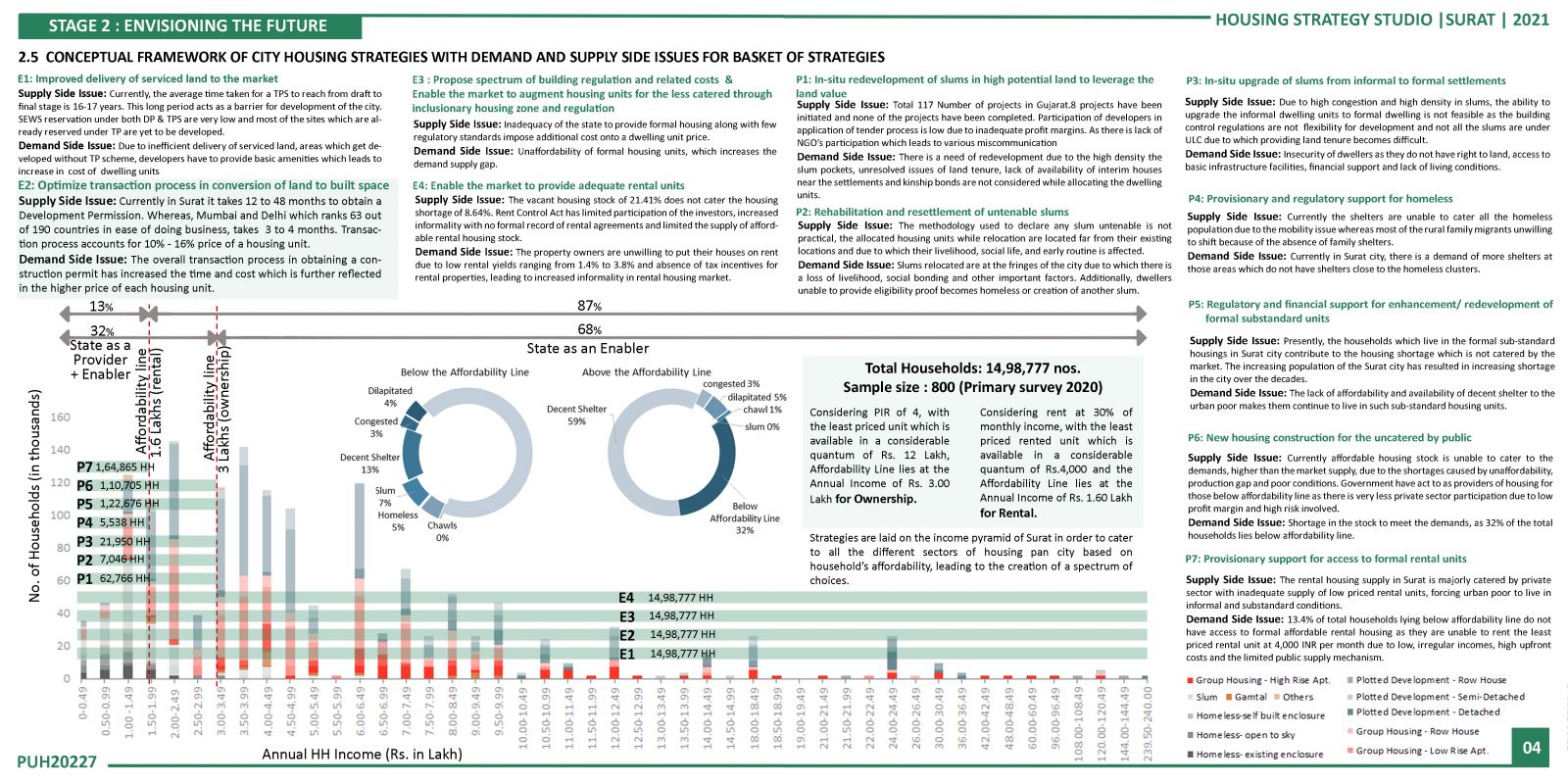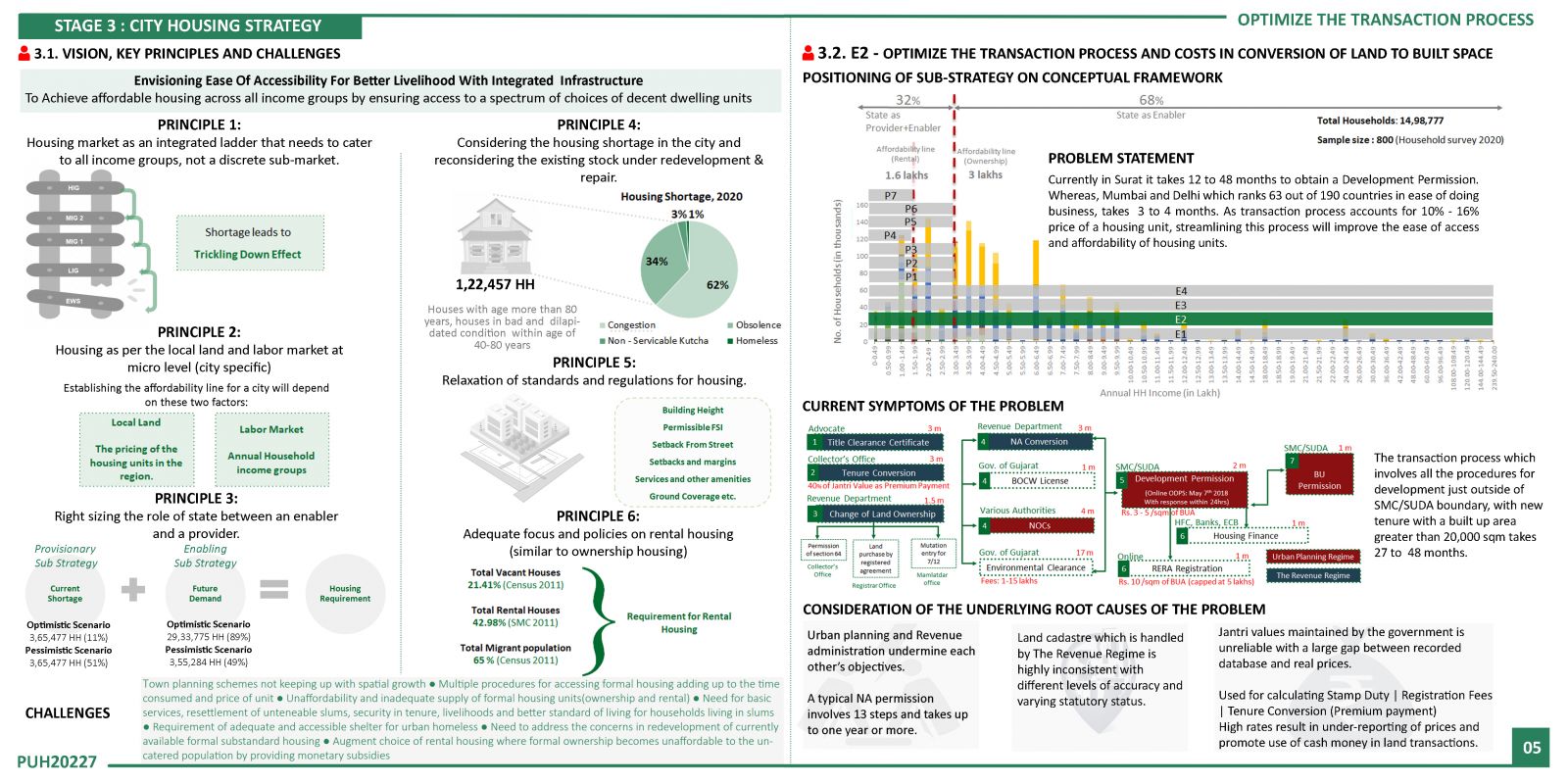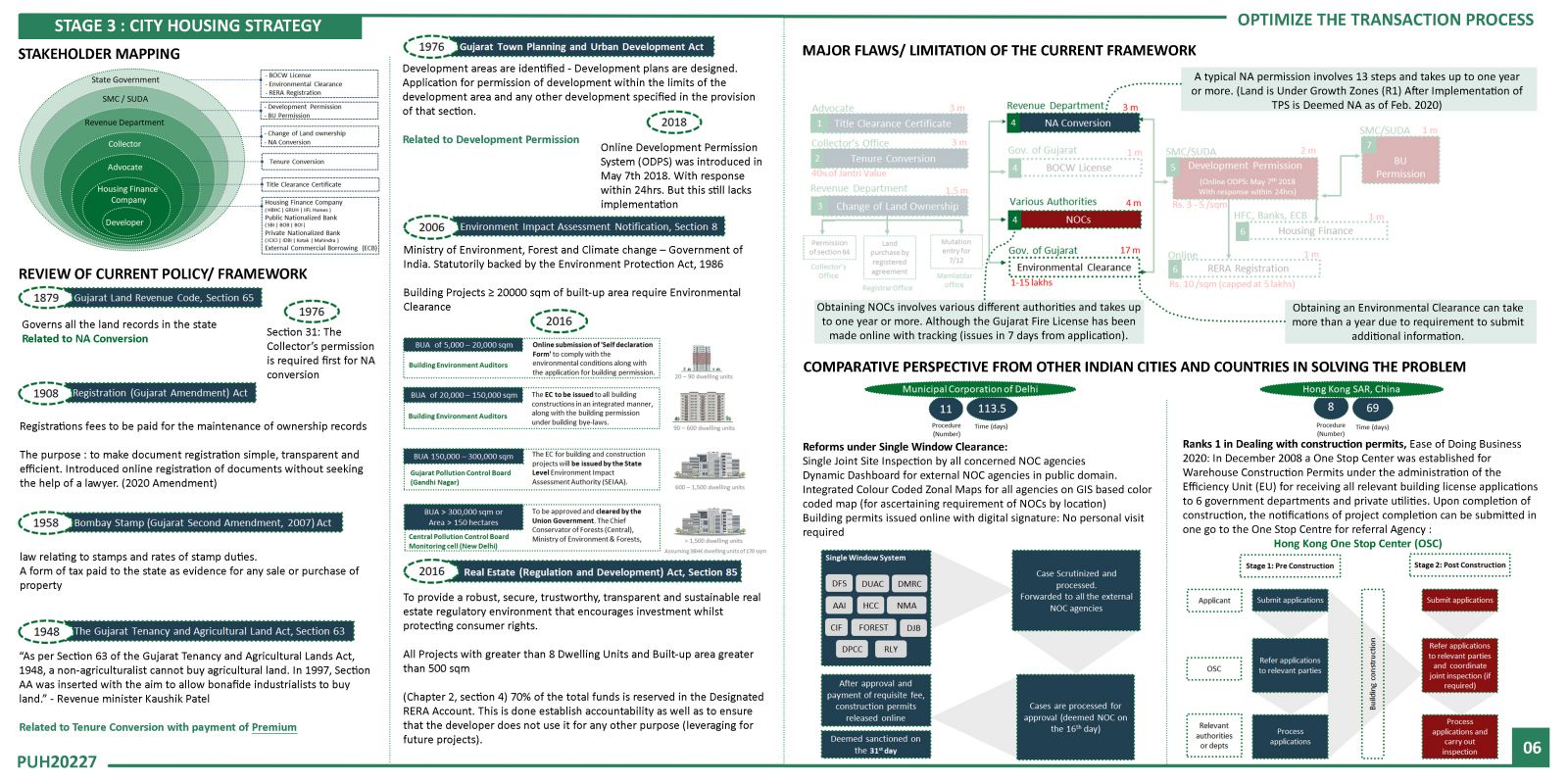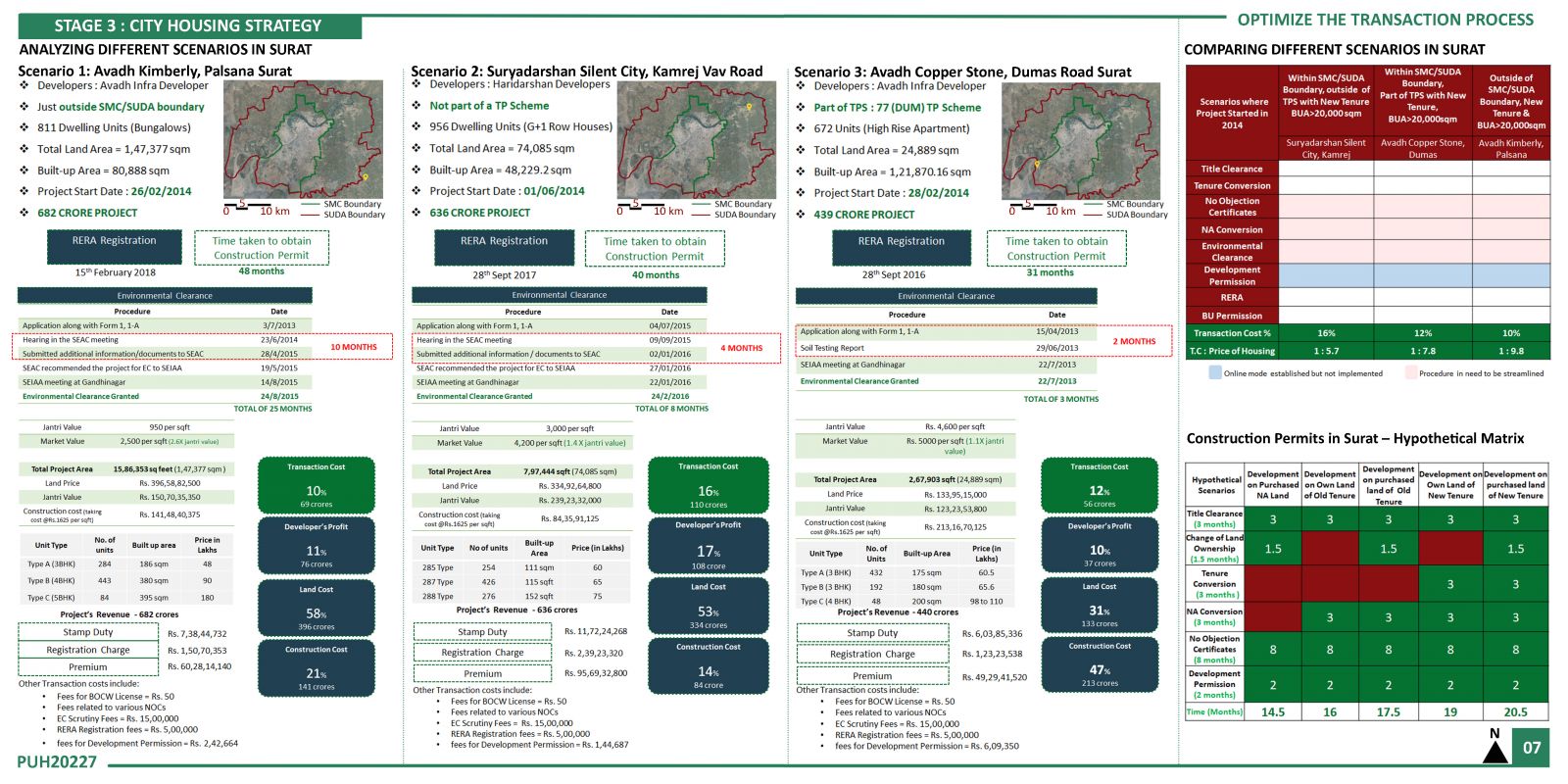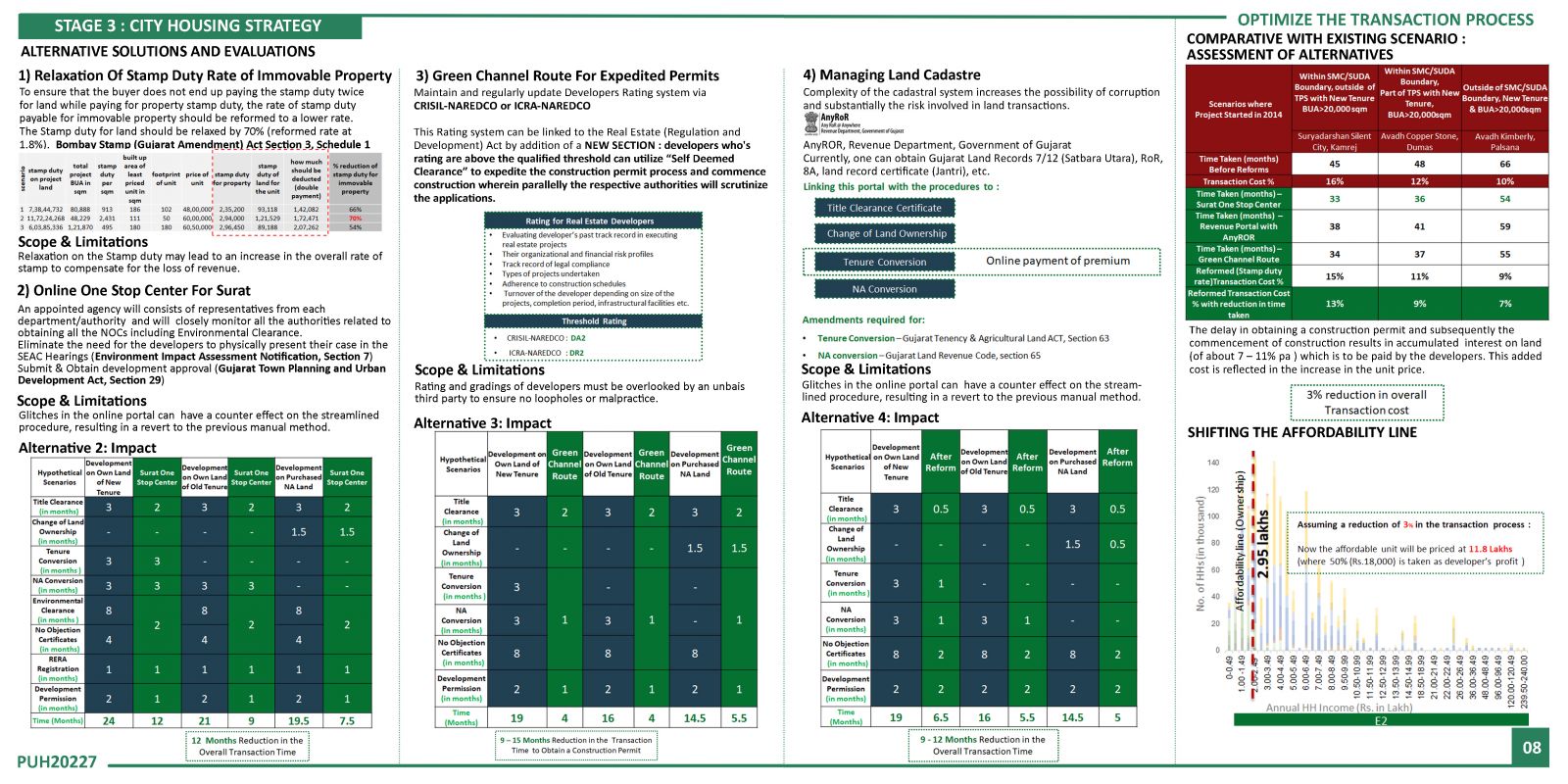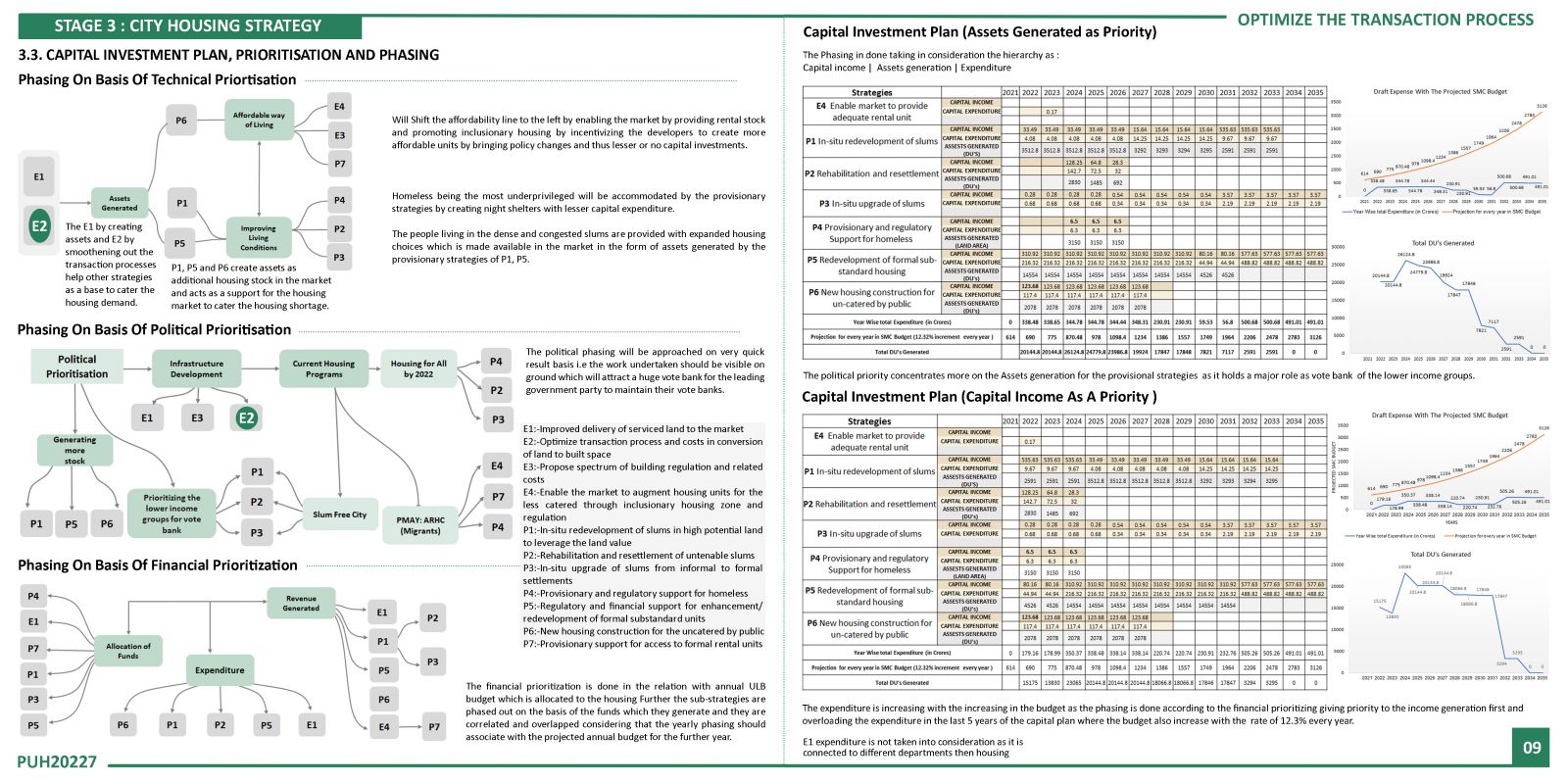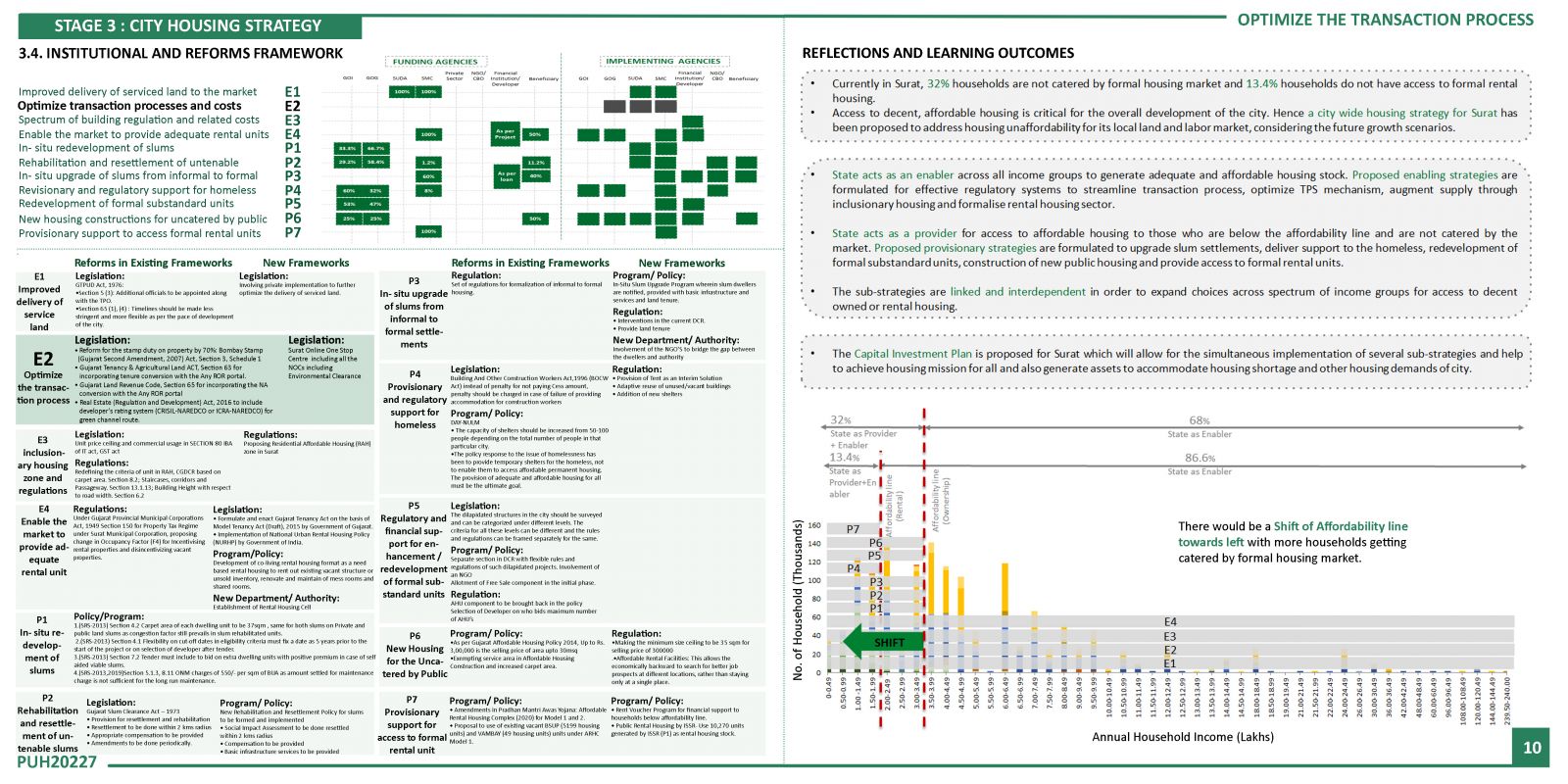Your browser is out-of-date!
For a richer surfing experience on our website, please update your browser. Update my browser now!
For a richer surfing experience on our website, please update your browser. Update my browser now!
This Housing Strategy Studio which is based in Surat is designed to equip us with the skill-sets and tools required to prepare a baseline housing profile in terms of need, demand and supply pattern of a city though analysis of various forms of primary and secondary data sources. Followed by techniques behind building future growth scenarios in terms of future need and demand with respect to socioeconomic and spatial growth patterns. Through these an enabling sub-strategy to optimize the transaction process and cost in conversion of land to built space is formulated.
